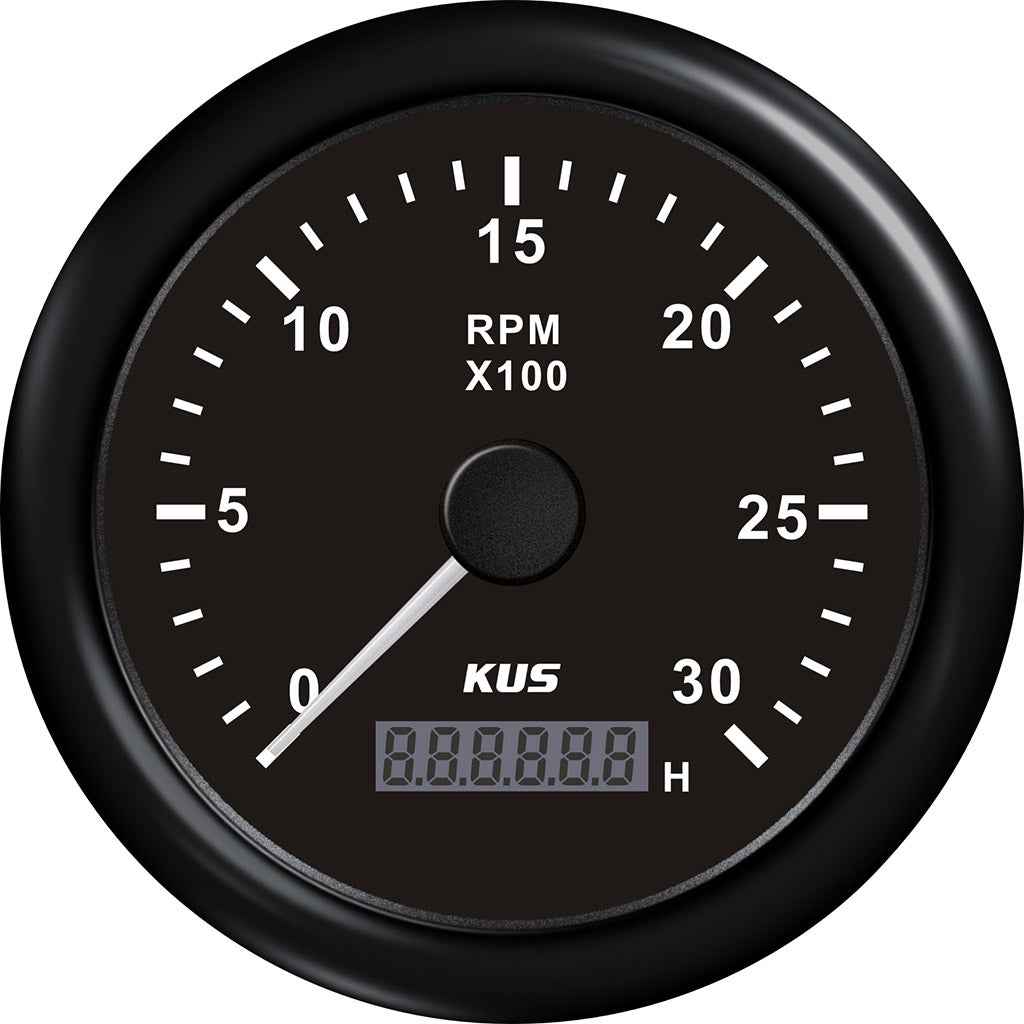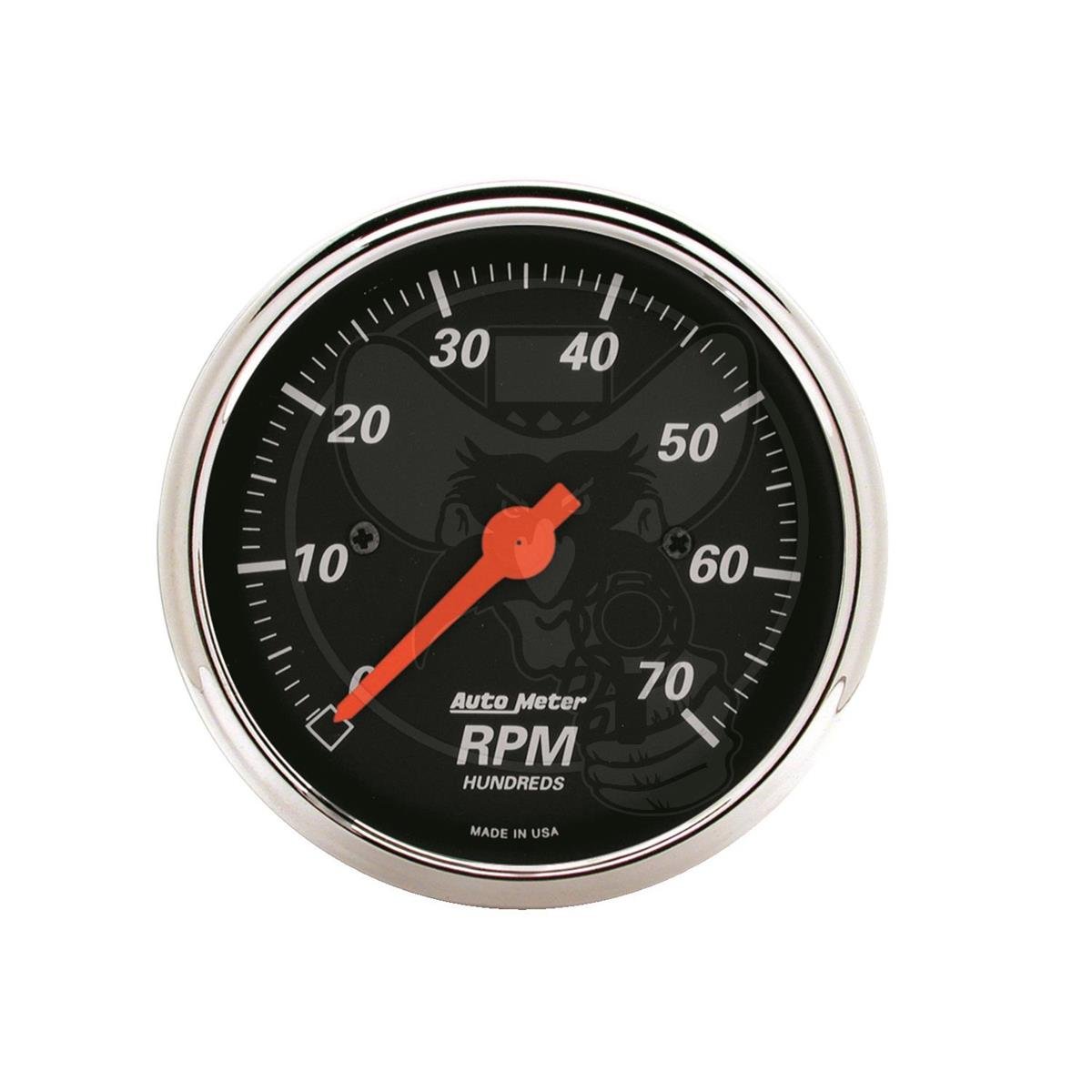Enhance Your Driving Experience with a Reliable Tachometer
Enhance Your Driving Experience with a Reliable Tachometer
Blog Article
The Relevance of a Tachometer in Checking Engine Rate and Performance in Automotive Applications
In the world of auto engineering, the tachometer stands as a pivotal instrument in the motorist's toolbox, giving a straight home window right into the internal workings of a vehicle's engine. Beyond its function as a mere gauge of revolutions per minute (RPM), the tachometer serves as an important tool for lovers and experts alike, using real-time understandings right into engine efficiency and health and wellness.
Value of Checking Engine RPM
Monitoring engine RPM, or changes per min, is an essential facet of auto upkeep and efficiency examination. Engine RPM directly correlates with the speed at which the engine's crankshaft revolves, showing exactly how swiftly the engine is running - tachometer. By keeping an eye on RPM, auto mechanics can evaluate the health of the engine, spot possible concerns, and fine-tune efficiency. An irregular RPM reading might indicate issues such as engine misfires, malfunctioning stimulate plugs, or issues with the fuel distribution system. Constantly high RPM readings could show hostile driving practices or the need for a greater gear shift to boost fuel efficiency.
Moreover, monitoring engine RPM is crucial for performance evaluation in racing and high-performance vehicles. Preserving optimum RPM levels is crucial for accomplishing peak power output and acceleration. Racers often utilize tachometers to guarantee they are operating within the excellent RPM range for optimum performance. In summary, checking engine RPM is not only important for spotting concerns however also for maximizing engine performance in various vehicle applications.

Benefits of Real-Time Data
In vehicle applications, real-time information plays a critical duty in providing instant insights into the performance and condition of the vehicle. By continuously keeping track of various parameters such as engine speed, temperature, fuel consumption, and more, real-time information supplies countless advantages that add to boosted performance and safety and security when traveling.
One considerable advantage of real-time data is its ability to sharp vehicle drivers and professionals to any kind of abnormalities or concerns immediately. This positive strategy makes it possible for fast recognition of prospective problems, allowing for prompt treatments to avoid further damage or failures. In addition, real-time data helps with efficiency optimization by giving instant feedback on driving behaviors and engine effectiveness. Chauffeurs can adjust their actions in real-time based on this information to accomplish better gas economic climate and prolong the life-span of their automobile.

In addition, real-time data plays an essential role in modern-day automotive diagnostics, making it possible for specialists to promptly diagnose and attend to breakdowns. This results in minimized downtime, lower maintenance expenses, and inevitably, improved general lorry reliability and durability (tachometer). By using the power of real-time data, vehicle stakeholders can make educated choices that favorably impact both click to read more the performance and durability of the lorry
Influence On Gear Shifts
The tachometer plays a vital function in enhancing equipment shifts by offering real-time engine speed data to the driver. When approaching the redline on the tachometer, it signals the vehicle driver to upshift to prevent over-revving the engine and creating possible damages.
Additionally, the tachometer help in attaining smoother equipment changes, specifically in manual transmissions. By keeping track of engine speed, drivers can execute equipment changes at the ideal RPM range, reducing snagging movements and reducing wear on the transmission parts. This accuracy in gear adjustments not just improves driving comfort yet likewise contributes to sustain effectiveness.
Enhancing Fuel Performance
Provided the visit homepage vital role the tachometer plays in maximizing gear shifts for efficiency and engine health, it straight adds to optimizing fuel performance in vehicle applications. By offering real-time responses on engine speed, the tachometer aids motorists in maintaining one of the most efficient RPM array for fuel economic situation. When chauffeurs continually keep an eye on the tachometer and adjust their motoring habits appropriately, they can avoid unnecessary gas consumption created by over-revving or lugging the engine.
Additionally, the tachometer helps motorists identify the most fuel-efficient equipment to be in at any given minute, preventing the engine from functioning harder than required. This is specifically essential throughout velocity and cruising, where being in the ideal equipment can considerably influence fuel effectiveness. Furthermore, the tachometer can signal vehicle drivers to potential mechanical problems that can be adversely affecting check out here fuel economic climate, such as a sliding clutch or a clogged air filter. To conclude, the tachometer works as a useful device in boosting fuel efficiency by promoting ideal driving routines and recognizing locations for renovation in the vehicle's performance.

Optimizing Engine Longevity
The tachometer's function in keeping an eye on engine rate and performance is crucial in guaranteeing the long life of vehicle engines. By utilizing the tachometer properly, drivers can maximize engine durability with mindful RPM monitoring. Constantly revving an engine as well high can lead to too much deterioration on vital components, such as the pistons, shutoffs, and bearings. Gradually, this can result in lowered engine performance and potential breakdowns. Keeping track of the tachometer allows motorists to stay within the advised RPM variety for their vehicle, stopping unnecessary pressure on the engine and prolonging its lifespan.

Conclusion
To conclude, the tachometer plays a vital role in checking engine speed and efficiency in automobile applications. By giving real-time data on RPM, it permits for effective equipment shifts, boosted fuel effectiveness, and made the most of engine long life. This tool is necessary for maintaining optimal engine performance and ensuring the overall performance of an automobile.
Report this page